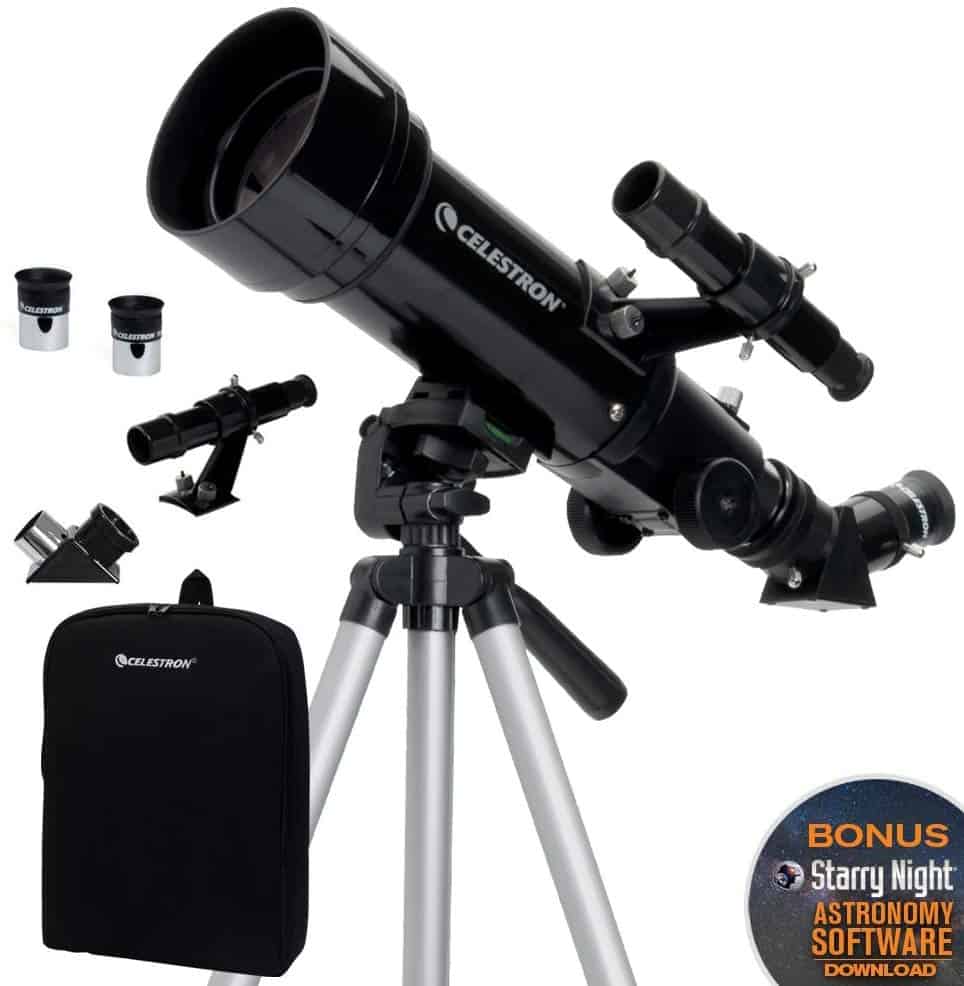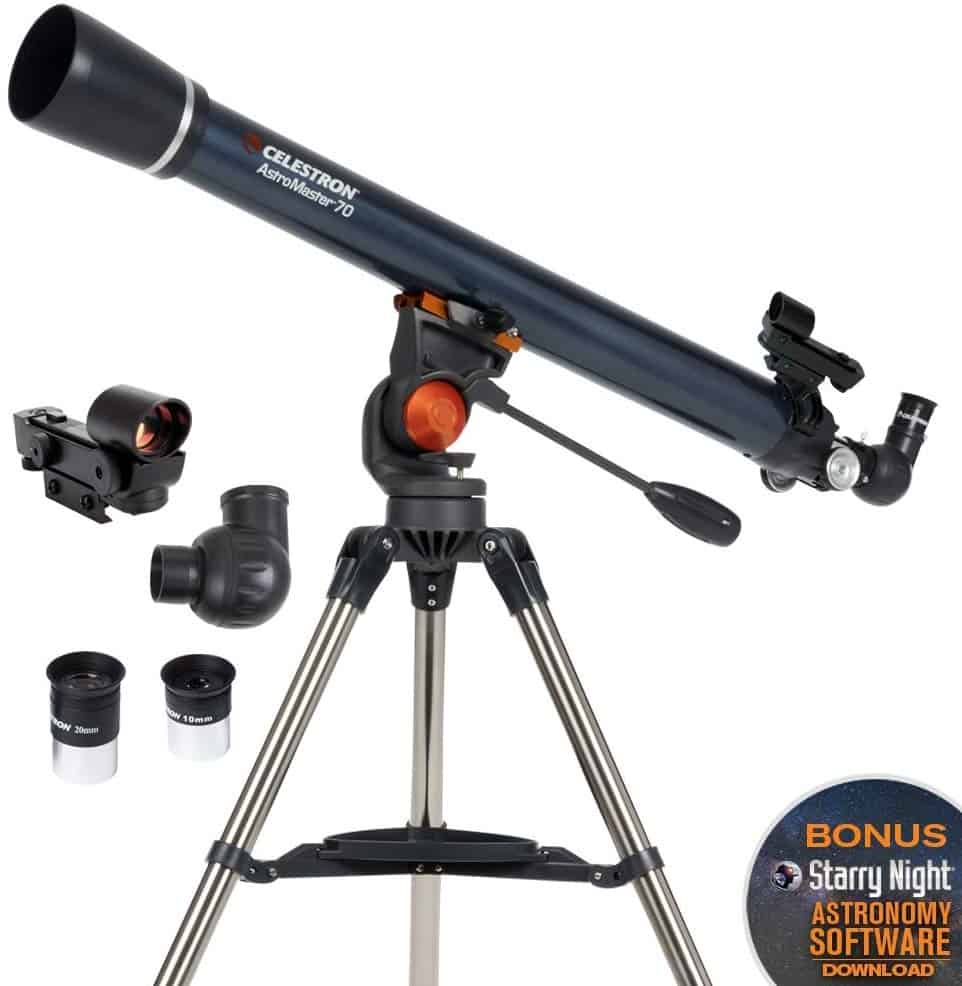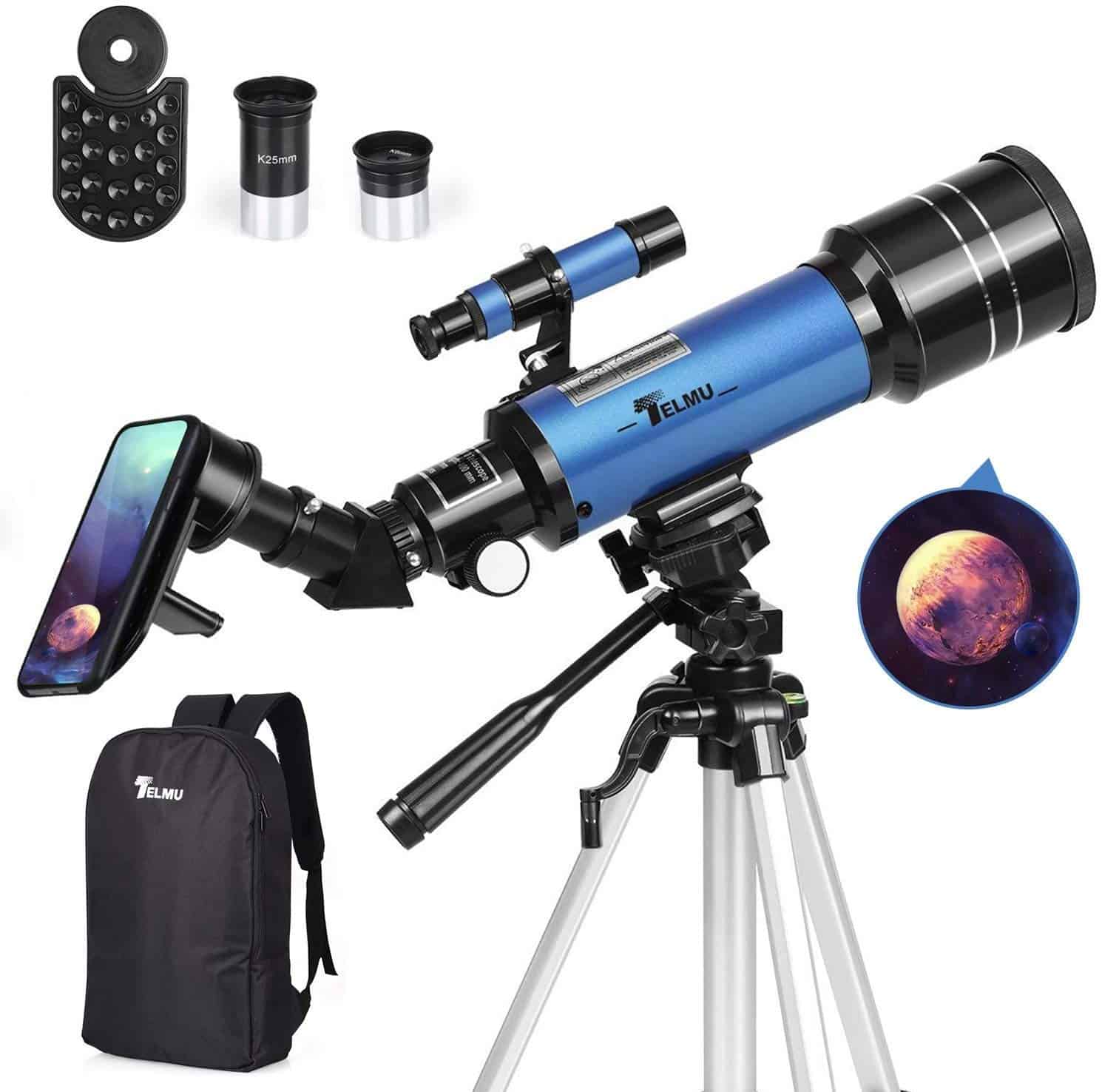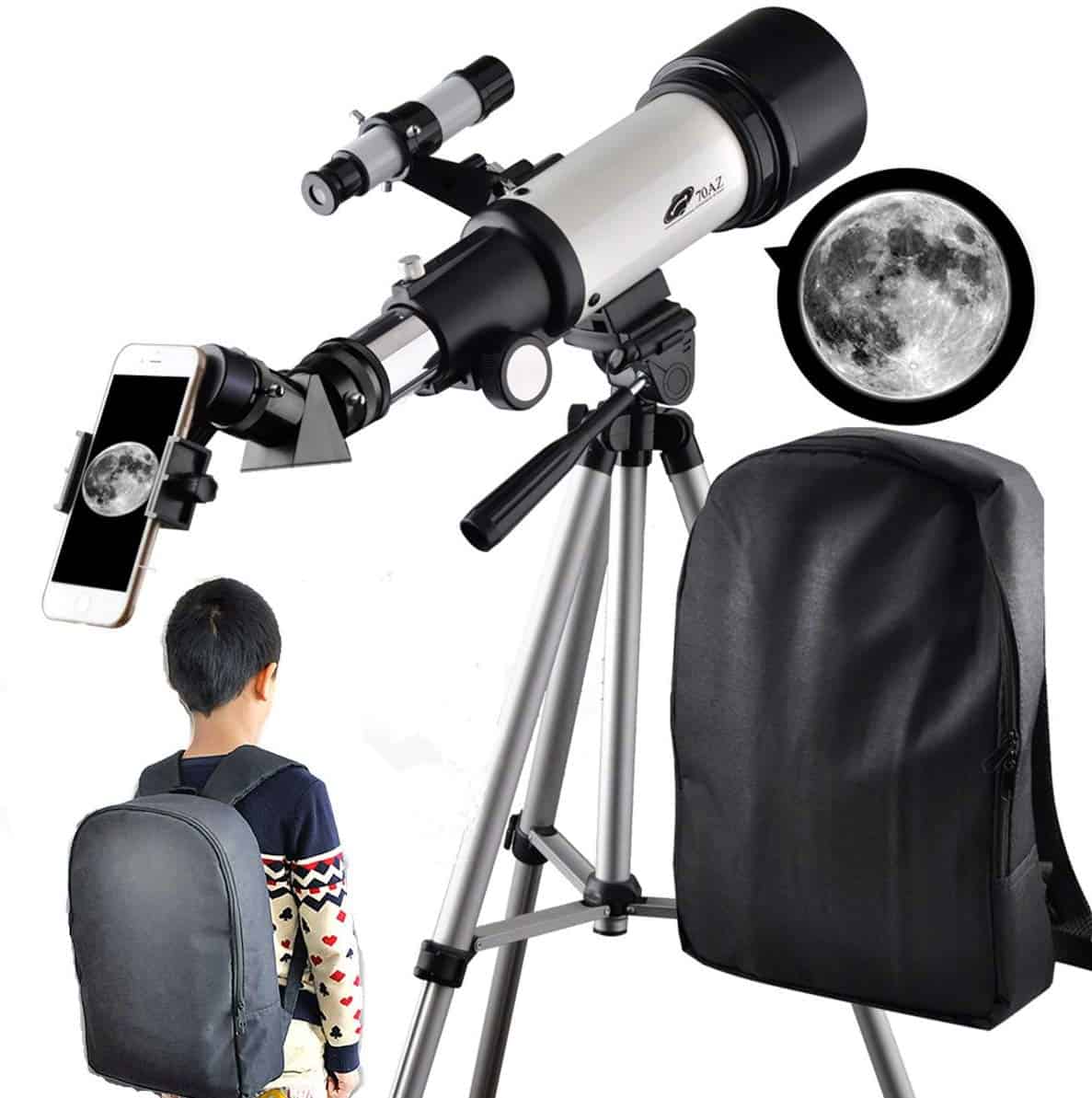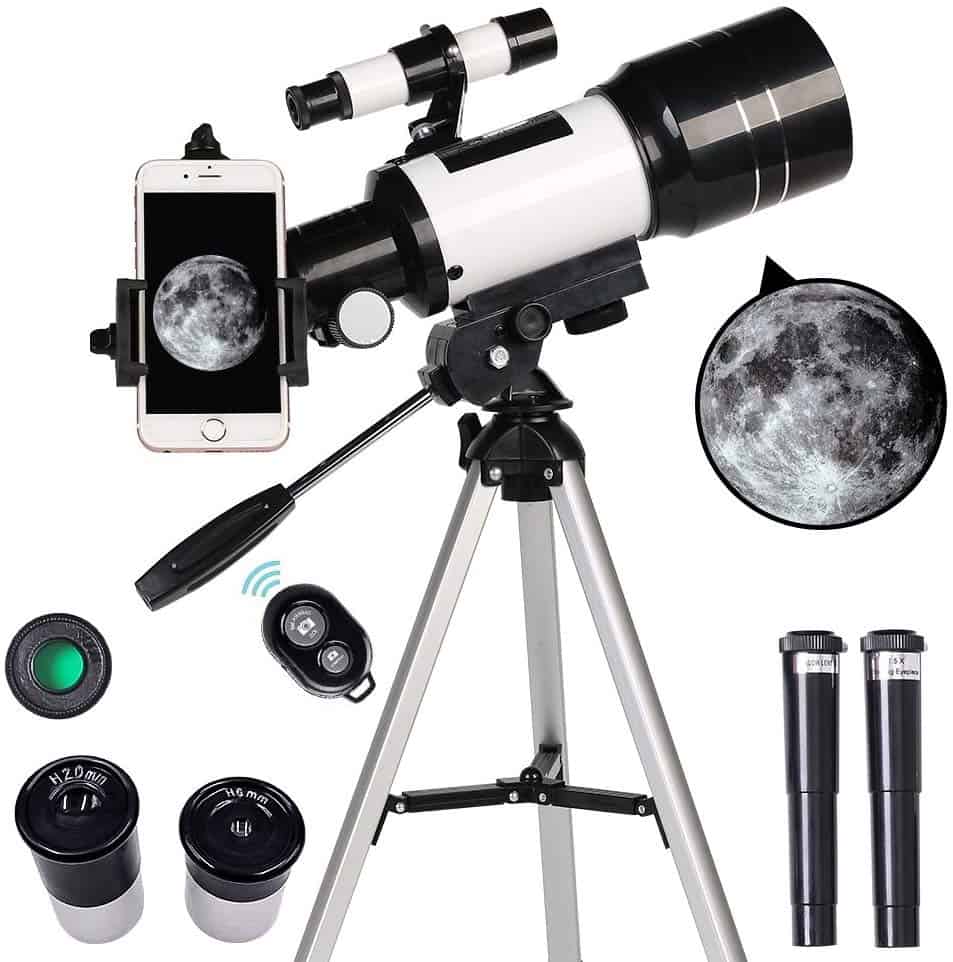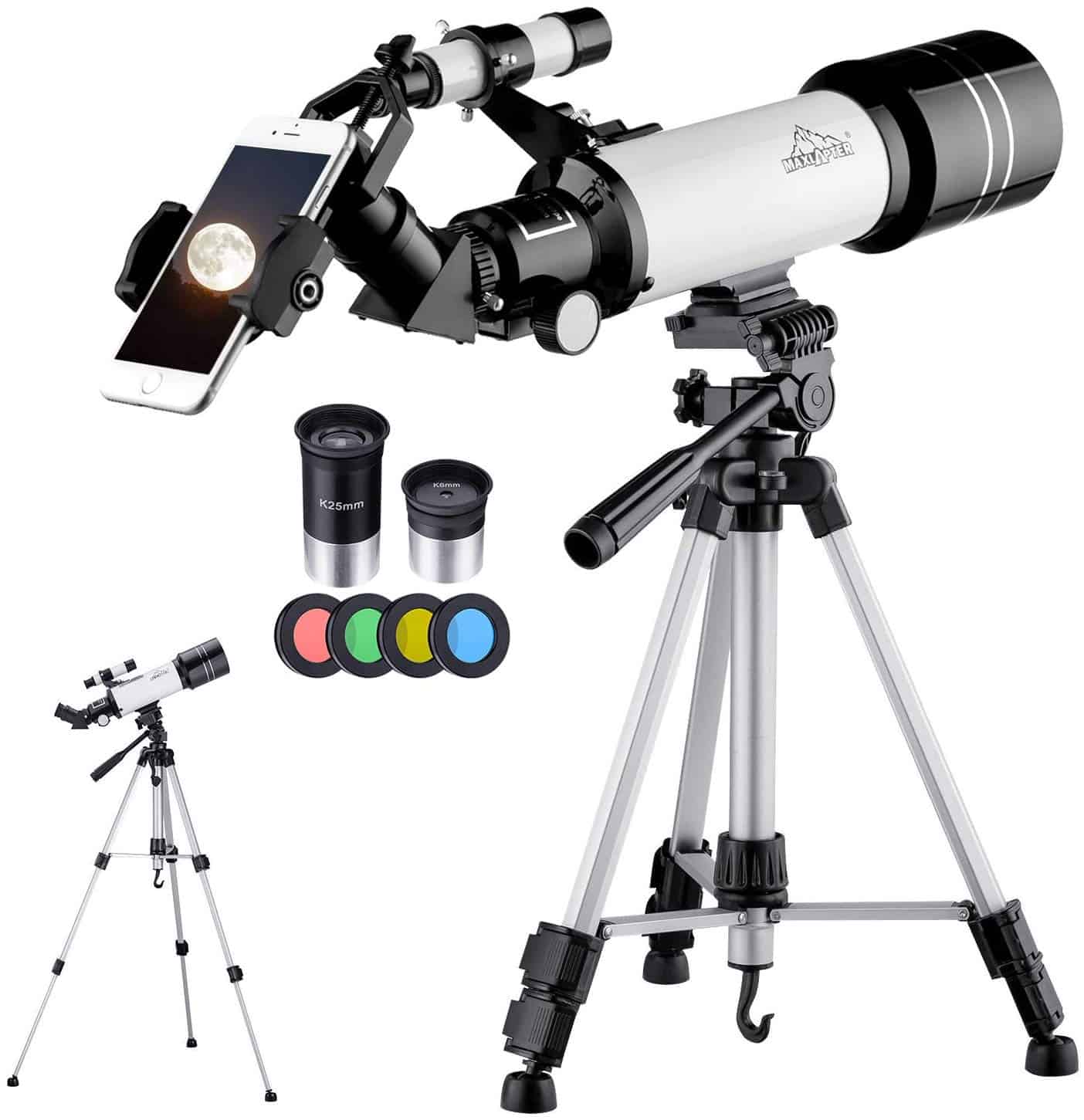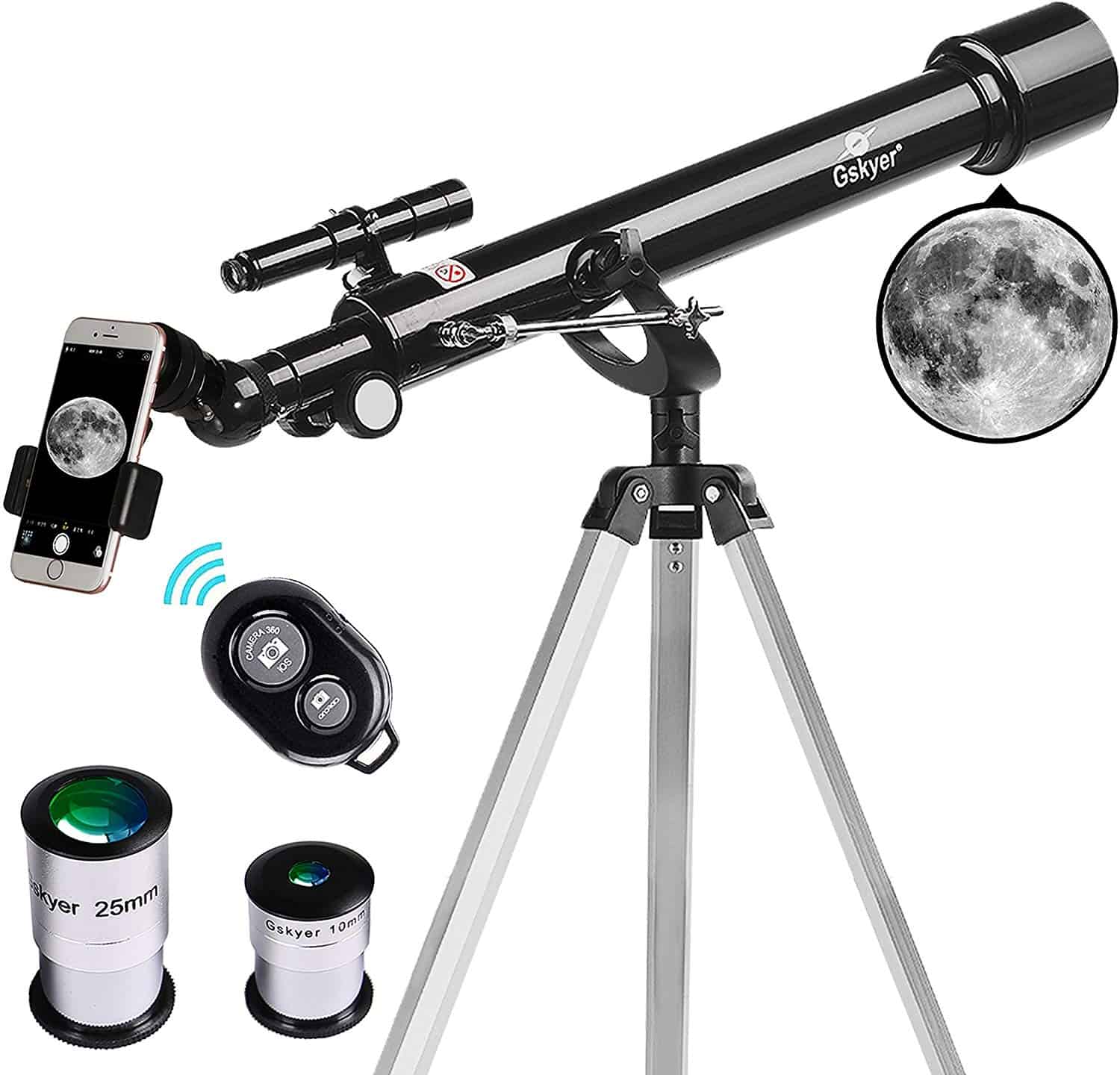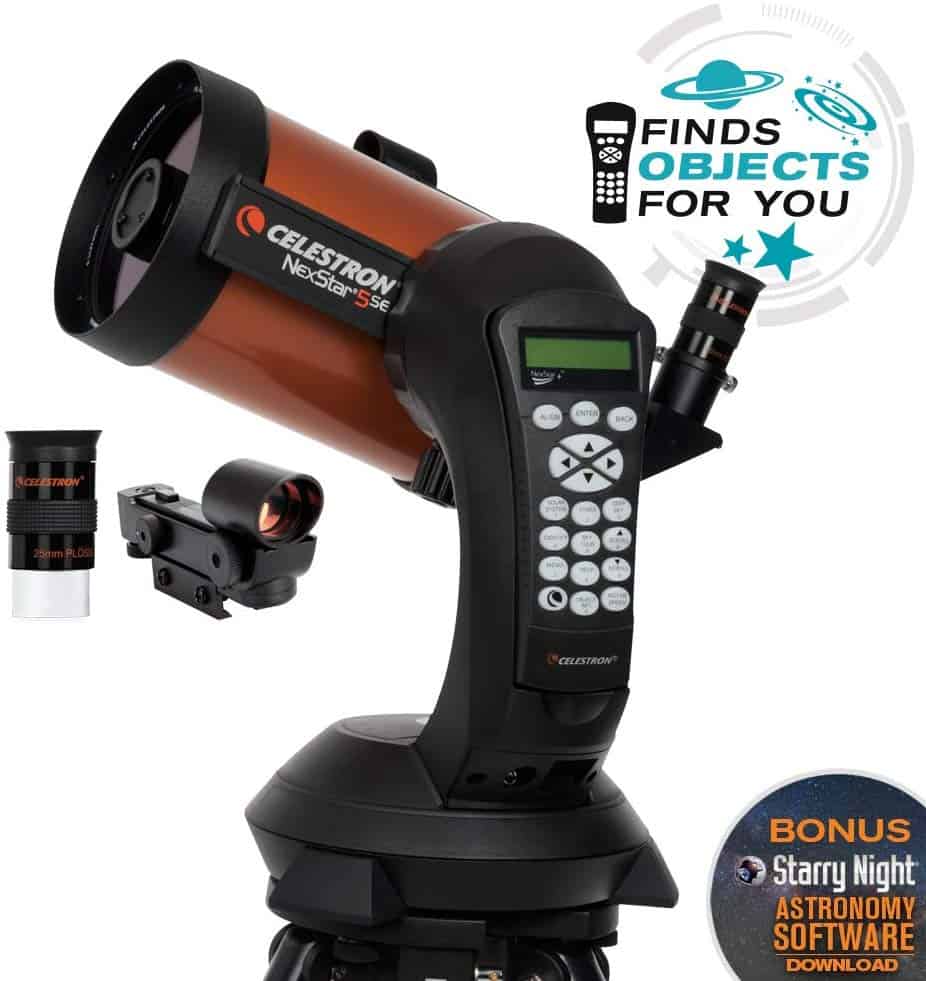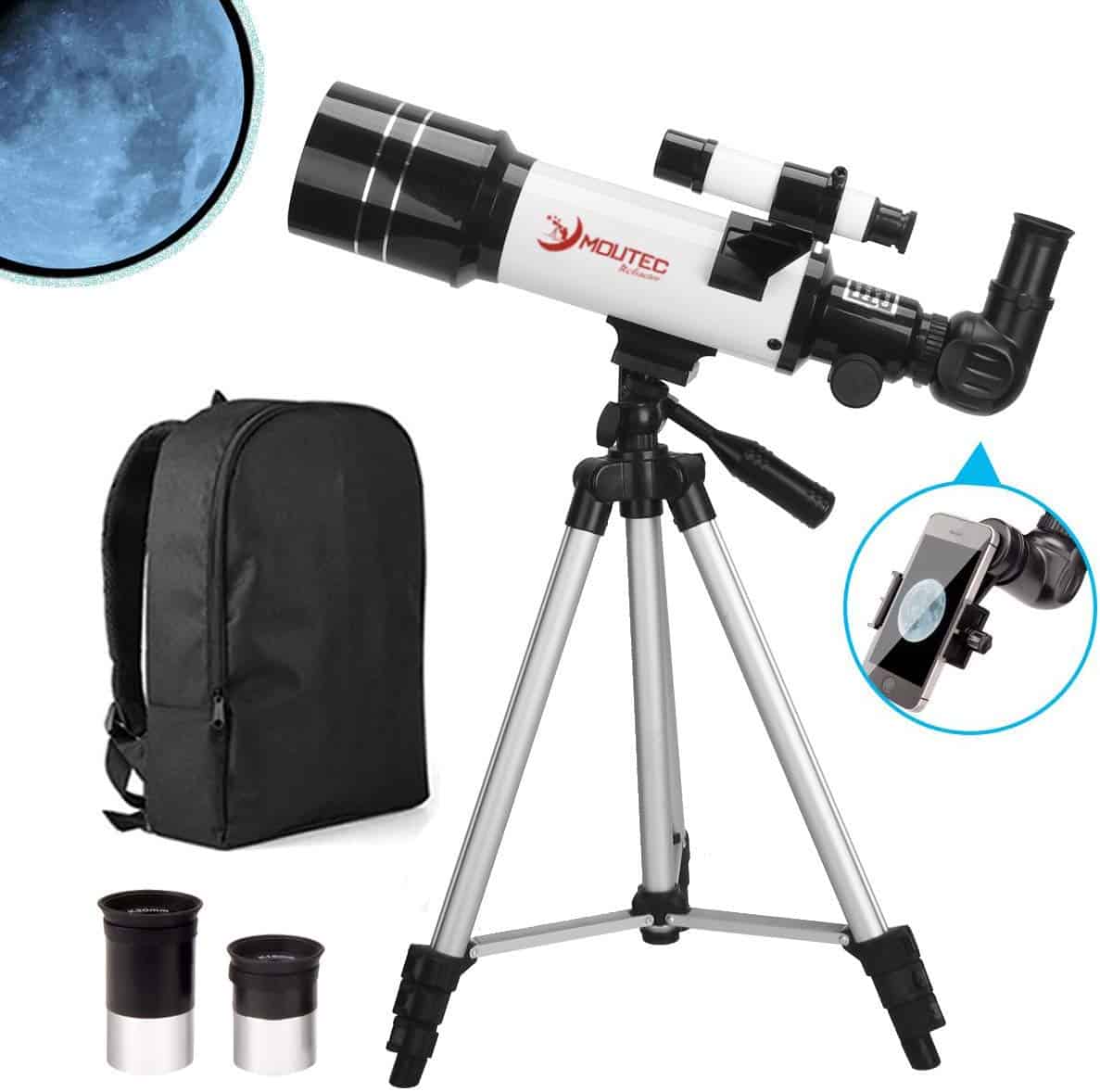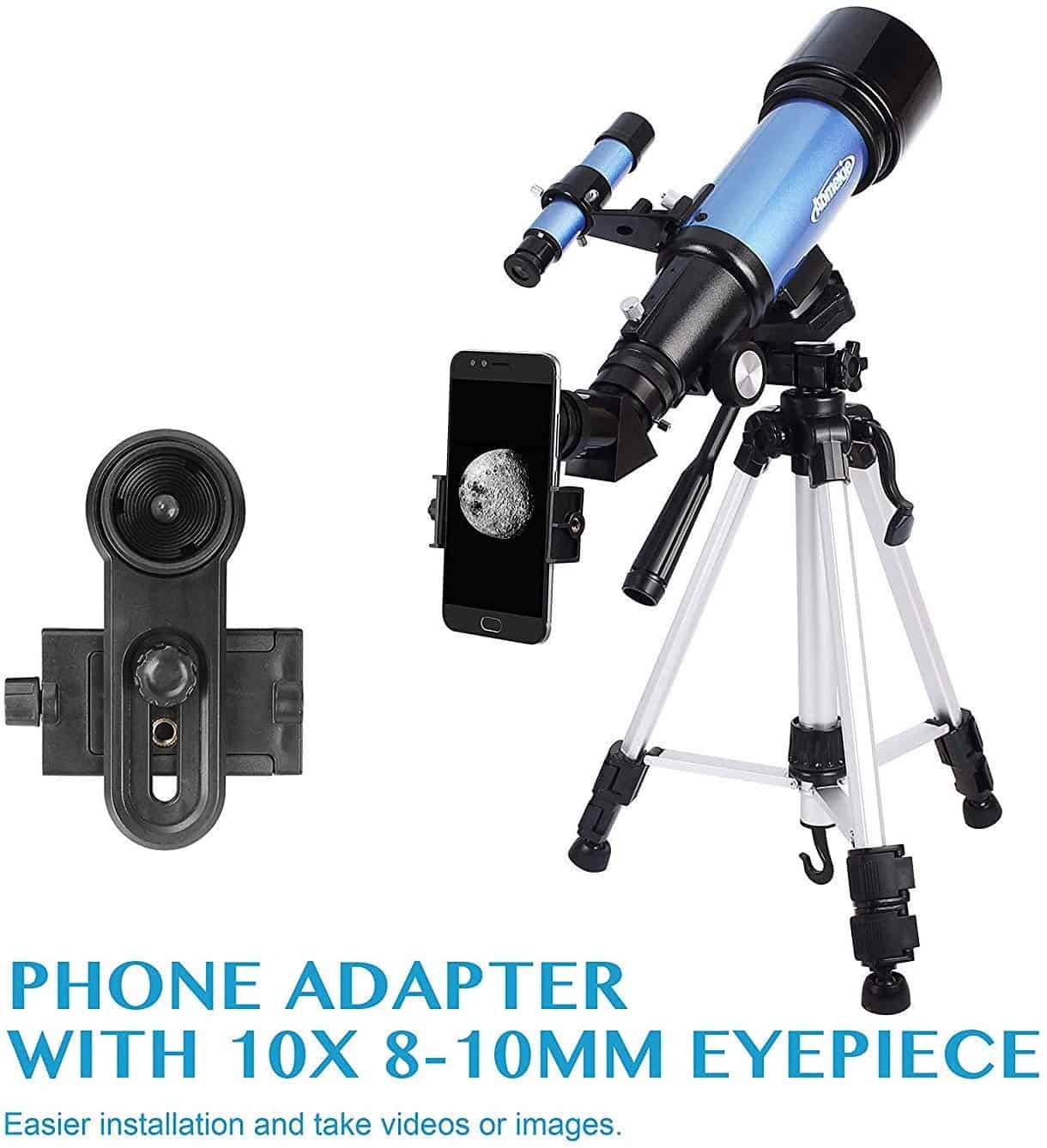Want to see the night sky with all its glory? Imagine lying on the grass, looking at the clear sky bright with all the stars you never knew existed. Ever wondered if you can see them closely? Ever wanted to see for yourself what a star looks like with the help of a telescope? If the answer is yes, then you are just reading the right thing then. For all of you wondering which telescope out of several ones out there is the best one for you, keep reading.
Telescopes range from as simple as those with two lenses arranged to telescopes that have dedicated systems installed in it to get you the best image possible. But do you need to spend that much on a telescope? Sometimes you need a telescope that can be used to appreciate all the beauty out there that our naked eye cannot comprehend. Well, stick to your seats and get yourselves ready to explore all the options of telescopes out there as we help you decide which ones suit best to your needs.
We have put together the reviews of the top 10 best telescope for beginners out there.
Let's get started!
Our Overall #1 Rated Pick
Celestron comes with some beneficial features. It is fully coated and has a very lightweight frame. It has a 70 mm objective lens. It comes with a backpack, so forget about the issue of storage. It is suitable for both celestial and terrestrial views. It has two eyepieces of 10 mm and 20mm. It is a refractor telescope.
It is so easy to carry and has a very portable tripod stand that you can take anywhere with you in a backpack. Telescope itself is also very lightweight. You'll face the very least difficulty in setting and installing the telescope. Its package also includes the astronomy software programs.
The 10 Best Telescopes Comparison Chart
Image | Product Name | Ranking | Price |
|---|---|---|---|
1 4.30 | |||
2 4.50 | |||
3 4.20 | |||
4 4.40 | |||
5 4.20 | |||
6 4.00 | |||
7 4.30 | |||
8 4.30 | |||
9 4.40 | |||
10 4.50 |
The 10 Best Telescope for Beginners
In this section, we review the Top 10 telescopes available for amateurs.
Celestron comes with some beneficial features. It is fully coated and has a very lightweight frame. It has a 70 mm objective lens. It comes with a backpack, so forget about the issue of storage. It is suitable for both celestial and terrestrial views. It has two eyepieces of 10 mm and 20mm. It is a refractor telescope.
It is so easy to carry and has a very portable tripod stand that you can take anywhere with you in a backpack. Telescope itself is also very lightweight. You'll face the very least difficulty in setting and installing the telescope. Its package also includes the astronomy software programs.
Furthermore, it has two years warranty and technical support too. That means the company assures you its durability and stability.
PROS
CONS
The Celestron Astromaster 70AZ is a good telescope with a powerful refractor. It has glass optics. It has a 70mm refractive objective lens. It is convenient and reliable to use, and it helps to view celestial objects during the night and terrestrial objects in the day time. It has a very lightweight frame and consists of two eyepieces.
It has a tripod stand that is included in its package, is easy to adjust and fix. It has a wonderful feature of a star pointer finder that has a red dot. This star pointer finder is powered by battery, so turn in on only when you need it.
It has two eyepieces of 20mm and 10mm, a red dot finder, and a tripod stand in its package. Its handle has Alt-Az control that promotes the desired setting and working. It has two years warranty and complete technical support that is completely unlimited.
PROS
CONS
The TELMU Telescope is best for beginners. It is refracting telescope with a 70 mm aperture and has a focal length of 400mm. It has coated optical glass. This coated optical glass enhances the brightness of the image of the object.
It has two eyepieces that can be changed. These eyepieces are of 1.25" Keller. Due to these eyepieces, you can increase the power of the TELMU telescope. It also has that finder scope that comes with the bracket and crosses on it; hence you will never miss object, and it will also make it easy to find the object.
No additional installment of parts and complex setting is required. Just fix the telescope according to feasibility, and it's available for use. The phone holder also helps you to fix the phone, and then you can also capture pictures.
It comes with a box and backpack to store it. Hence you can take it anywhere with you in this bag. The company provides two years guarantee for this product.
PROS
CONS
This telescope is best for kids and beginners and has a 70 mm aperture and has a focal length of 400mm. It has a fully coated optical glass lens that protects your eyes. It may not prove very efficient and perfect for the professional astronomers but is best for students and beginners.
It also includes a 10mm phone eyepiece adaptor. It has that amazing finderscope that has bracket and cross lines on it that makes it easy for you to locate objects. It has an aluminum tripod stand, which has a very easy setting and can easily be adjusted.
It gives you all the good services of the telescope and serves you both day and night. The backpack makes it easy for you to take it with you anywhere you want. The company assures you complete technical support and assure you there help with any technical problem.
PROS
CONS
This telescope works at its best for the beginners. It has 3X Barlow Lens. It has two eyepieces of H20mm and H6mm, which allows you to magnify objects 15 to 150 times. Whether the question is about stars and planets at night or the landscape and wildlife in the day time, it will help your kid to make the learning easy.
It has an aperture of 70mm and has a focal length of 300mm. One of the most amazing and favorite feature of ToyerBee Telescope is that it has wireless camera remote control that makes working easy and more advance. It also includes a smartphone adapter.
The package consists of complete guidelines of installation in video and paper form. Hence even a person with very basic information can install it very easily.
PROS
CONS
Maxplater is a telescope for kids and beginners. It consists of a multicoated lens and is very famous for its high transmission feature. It has high transmission of 99.5% that helps to get a brighter and clearer image. These kinds of coatings also prove protective for your eyes.
It has two eyepieces of K6mm and K25mm that helps to magnify 16 to 66 times. Its setting is not that complex and doesn't include an extra connection with any tool, and hence its easy connection makes learning easy for children.
It has a camera shutter control wire with it. Its package includes the smartphone adapter, backpack, and tripod stand. It is very portable, i.e., you can take it anywhere in that backpack. Maxlapter Telescope offers a lifetime warranty and 30 days refund policy. Hence forget about the tension of durability.
PROS
CONS
Gskyer Telescope is a beginner's telescope that has 60 m aperture. It has a focal length of 700mm, and its optical glass is coated that protects your eyes. In addition to the protection, it helps to get a brighter and clearer image fulfilling the requirements. This telescope is easy to fix and set. Hence no expertise is required for its set up and is always ready to use.
That will encourage kids to learn and will make it easy for them. It has two replaceable eyepieces of 10mm and 25mm that help to enhance its magnifying power. It has an aluminum tripod stand that has an easy setting, and you can set that tripod stand according to your desired position. It comes with a backpack, a tripod stand, and a smartphone adapter.
PROS
CONS
Nexstar Computerized Telescope is famous for its advanced features. Its features are well designed that support its usage for both beginners and experienced astronomers. It has a five-inch aperture in it that allows us to gather enough amount of life and hence allows an observer to gather all the necessary observation by ensuring maximum efficiency.
It has a fully automated goto mount that will locate the objects through its database record of more than 40000 objects for you automatically. Its setup is very easy and isn't that much detailed. You will get a well-known astronomy software program for it. The company also offers two years warranty and unlimited technical support. It also has the star finder scope to locate objects easily.
PROS
CONS
Moutec Telescope is the telescope for kids and beginners. It has a 70mm aperture with a focal length of 40mm. It has that optical coating that provides the improved quality of the image with good brightness. It also protects your eyes.
It has two replaceable eyepieces of K20mm and K10mm that will help you to magnify objects 20 to 40 times. Its package also includes the smartphone adapter that will help you to capture the desired photos and videos. It also has a tripod stand with easy adjustments and settings.
You can adjust the height of the tripod stand according to desire in a range of 24" to 52". It also comes with a backpack and other necessary accessories. A backpack lowers the issue of storage and portability. You can take this telescope with all its accessories wherever you want in a backpack. Its design ensures its stability and durability.
PROS
CONS
Aomekie is the beginner's telescope that has an aperture of 70mm with a focal length of 400mm. It has that coated optical glass that captures an object with clarity and brightness. In addition to all this, it also protects your eyes.
It comes with a tripod stand and a smartphone adapter. The aluminum tripod stand is easy to adjust. You can set its height 16.1inch to 51.6inch. That tripod stand is not that shaky and provides a stable working. It also has two eyepieces of K20mm and K10mm that are the most advanced of Kellner eyepiece and can magnify up to 12 to 120 times.
It also includes the finder scope that makes it easier for the user to locate the desired objects. The erect prism within the telescope placed at an angle of 45° helps to form an erect image. Furthermore, the tripod stand can be set at various angles to achieve perfection. It also has a backpack included in its package.
PROS
CONS
Buying guide
When looking for a telescope for yourself, you need to understand their types, their working, and usage principles. Well, we have that covered as well.
If you have decided to buy a telescope, then which telescope you would buy would affect you. Seeing a far off planet in a newspaper or on animation on a computer is a different experience than view it personally on a telescope. Once you have had the experience of seeing everything using a telescope, it is highly unlikely you ever want to switch back to not wanting to see through it again.
How Telescopes Work
Before buying a telescope, one should know how it works. Do not worry! We have it covered for you as well. The primary purpose of a telescope is to collect light, and each telescope type does it differently.
The more light from an object, means more details are visible. Telescopes do precisely that, collect light and then show the details.
Types of Telescopes
Refractor Telescope
Refractor telescopes have a large lens on their front that collects the light from whatever subject is in consideration. The refractor mechanism that is installed can be both manually controlled and can have battery-operated button controls as well.
Pros
- Useful if you want to see objects that are not light-years away
- Requires no training to be able to use it
- Zero maintenance
- Rock-solid, sturdy and compact design
- Better resistant to harsh environments
Cons
- Does not light up a dim object that good
- Weight can be an issue
Reflector Telescope
The reflector telescopes have a mirror that reflects the light coming from the object. The mirror reflects the image to another mirror that bumps up the light while viewing a faint object and hence provides better low light performance. For dim objects, reflector telescopes serve better than a refractor telescope as they present images better in quality.
Pros
- Lighter than a refractor telescope
- Better low light performance
Cons
- Not suitable for environments that are exposed to dust and water
- Regular maintenance needed
Compound Telescope
Catadioptric telescope or compound telescopes use two mirrors to produce high-quality images. These two mirrors are placed in the front and the back of the telescope, unlike all other telescope designs.
Pros
- Optics tube is resistant to exposed environments
- Works better for close objects
- Good low light performance
Cons
- Heavy
- Expensive
- Image is usually less bright
Style of telescope
So with the types of telescopes out of the way, are you still unsure of which telescope is better for you? Do not worry! We have just started, we will make sure you know which telescope to choose!
If you want a maintenance-free operation, refractor telescopes are the ones you should go for. The reflector telescopes are not too demanding on the maintenance side. Moreover, they are great if you are just starting with the telescopes and astronomy.
For objects relatively near, we recommend using refractor and compound telescopes, and for low light viewing compound and reflector telescopes are the go-to telescopes.
The best value for money would be in buying a reflector telescope.
Aperture
The aperture size determines how much you would be able to view through a telescope, and in most cases, a bigger aperture is better.
The bigger the aperture size, the more the light is allowed to pass through the lens or hit the mirror, and the better the image quality.
We recommend buying a telescope with the largest aperture size you can afford if you are on a budget as it will improve the image quality.
Focal Length
Another primary thing to look for is the focal length. It is the distance between the telescope focal point to the mirror of the telescope.
The focal length of a telescope is not as important as the aperture, but the bigger the focal length, the bigger the object will appear as compared to a telescope with a smaller focal length.
If you have the budget, choose a telescope that hits the sweet spot. But if you have to choose between aperture and focal length, prefer larger aperture.
Magnification
Magnification is an essential feature of a telescope. It is determined by the focal length and the eyepiece of the telescope.
Magnification is not as important as it is advertised to be. A magnified image is not of any use unless it has clarity in it. Therefore, strike a balance between the aperture and the magnification.
Size
There are telescopes of various sizes in the market. However, a telescope's size usually is the size of its aperture. A small telescope is a telescope with usually an aperture size of up to 4 inches.
The medium telescope is a telescope with an aperture size of between 4 and 10 inches, and anything higher than 10 inches is referred to as a large telescope.
Electronic Controls
The traditional telescopes used manual controls, but because of the advancements made in the domain, electronic controls are becoming less expensive and are readily available.
These systems help in the autofocus capability of the telescope and can automatically adapt to the lowlight environments.
For beginners, this feature is not essential unless you are buying a telescope to see moving objects and have a big budget.
Accessories
Most modern telescopes are sold as complete systems, so enhancing the telescope's performance in any way is very difficult.
All the things that you need to get the telescope working come within the package. You can open the package and set up the telescope to get it into working condition without needing to buy new items.
Eyepieces
One of the most overlooked things in a telescope is the eyepiece. People just look for better apertures and buy the telescope. They don't think that having a small eyepiece would have them squinting continuously, and they would not get the image clarity they want. So, before buying a telescope, look at the eyepiece specifications as well.
Taking care of your Telescope
It is not only about buying a good telescope, but also about taking good care of it. Even the best telescope will not last for a long time if you don't take proper care of it. Do not forget to clean your telescope from time to time.
An essential part of caring for your telescope is optics cleaning. The disadvantage of not cleaning the optics is you will get unclear images of whatever you see with the telescope, and that is not on what you invested on, is it? Furthermore, dirty lenses are prone to get scratched easily and may lead to the telescope being unusable.
Most of the telescopes come with a lens cap. If you lose the cap, or your telescope didn't come with one, we recommend buying a new cap to protect that lens from dust.
Tips for Beginners
You should have realistic expectations of the telescopes that you are using. You will not be able to get the image that you see on the internet with your telescope as those images are taken with very expensive telescopes.
We are not saying that you will not enjoy your experience; your experience is going to be great, but do not expect a million-dollar resolution from a consumer telescope.
We have formulated some tips to make you better at using your telescope and getting the best experience from it.
Avoid Buildings
Always prefer open areas to use your telescope so that no object hinders your view of the object. This seems like a small tip but saves many people from having an awful first experience.
Avoid windows
Another common mistake that the telescope owners make is looking through a window. You should know that while viewing from a window, the window glass becomes the part of the lens. Against the common misbelief of the telescope users, looking through a window using a telescope will not improve your image quality, especially if there is a significant temperature difference between both sides of the window.
Look through the corner of your eye
Another great tip while observing objects in low light is to look at the object with the corner of your eye. It is proven that while looking at low light objects, looking from the corner of the eye helps a lot.
Use the lowest power eyepiece
Test several eyepieces before choosing which eyepiece to use with your telescope. The eyepiece with lower power will generally give you the best viewing experience.
FAQs
What should we look for in a telescope before buying it when we are on a budget?
The feature of the telescope that should be given importance while buying a telescope is the aperture. The aperture determines the amount of light that enters the telescope. The bigger the telescope's aperture size, the more light will enter the telescope, and more details would be visible.
A four-inch mirror would be four times better than a two-inch mirror in a telescope. That is why it is recommended to buy a telescope that has the maximum aperture in your budget.
Is magnification important?
If you are buying a telescope than it is evident that you want to see a distant object as close to your eyes as you can, but the mistake that the buyers make is that they look for magnification alone. Magnification is essential, but a magnified image that is not clear is of no use to the viewer. That is why we recommend buying a telescope based not only on its magnification but also on its aperture size.
What things should I buy after I buy a telescope?
Most telescopes are complete packages. When you buy a telescope, it comes with everything that you would need to get it working. Finderscopes, red-dot magnifiers, etc. usually come with the telescope. But still, there are some high-end telescopes that require a separate mount.
Which telescope requires the least amount of maintenance?
If you want a telescope that requires the least amount of maintenance, we recommend going for the refractive type of telescopes as they seldom need any sort of support.
Final Words
As a beginner to astronomy and stargazing, you are in for a great experience. However, without the right type of equipment, you will not be able to get the best experience. Don't worry; we have made the buying [process a lot easier for you with the reviews of the top 10 best Telescopes for Beginners.
Moreover, the buying guide has a lot of tips that you are definitely going to benefit from.
Happy Stargazing, Folks!

